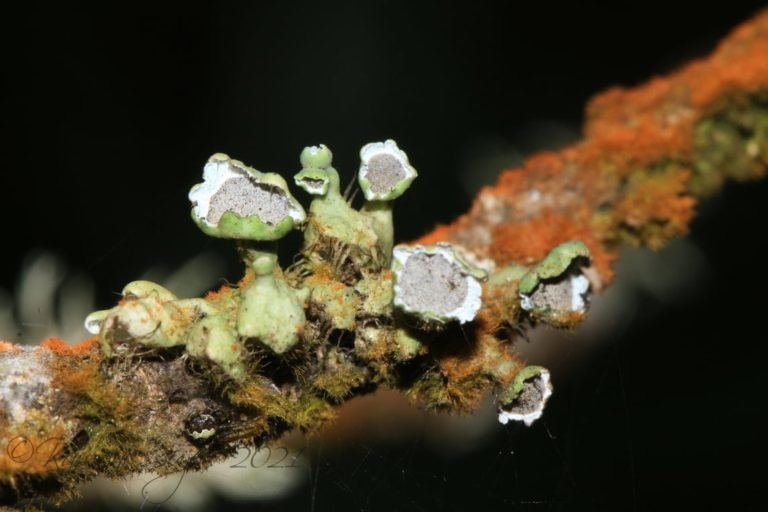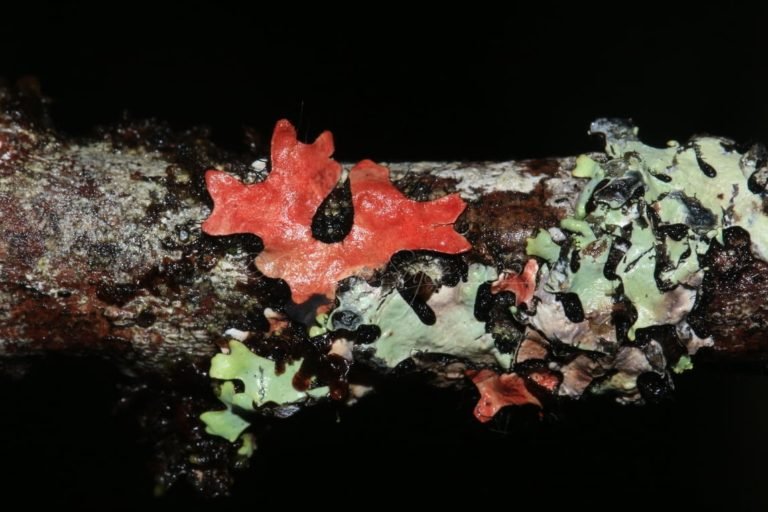- Researchers in Sri Lanka are studying how atmospheric nitrogen pollution affects lichens as a proxy for vegetation, to better understand how plants and soil are coping with the increasing volumes of nitrogen humans are releasing into the atmosphere.
- South Asia is a global hotspot for atmospheric nitrogen pollution, caused mainly by fertilizer emissions, as well as the burning of fossil fuels.
- Ammonia and nitrous oxide, the “reactive” forms of nitrogen in the atmosphere, are up to 300 times more powerful greenhouse gases than carbon dioxide, but also have direct impacts on human health, plant growth, and soil nutrient balance, with potentially severe impacts on food security.
- A U.N.-sponsored campaign, launched in Colombo in 2019, aims to halve nitrogen waste by 2030.
COLOMBO — When a study published in January flagged the risks to Himalayan forests from excessive atmospheric nitrogen pollution, it relied on an often-overlooked member of the ecosystem to assess the level of the threat: lichens.
A composite organism of algae and fungi, lichens, like plants, need nitrogen in order to thrive. But too much of it — either in the air, in the form of ammonia, or when it settles on soil and vegetation, in a process known as deposition — can be damaging.
And that was the message these bioindicators were sending back, with headline findings that up to 85% of Himalayan forests are impacted by critical levels of ammonia, and up to 98% by total nitrogen deposition.
Now, some of the researchers behind that study are digging deeper into the findings, focusing again on lichens, which cover an estimated 8% of Earth’s land area, but this time narrowing down on an experimental plot in central Sri Lanka.
Perfect bioindicators
“Lichens are perfect bioindicators to assess the impacts of atmospheric nitrogen pollution as the organism directly absorbs the nutrients required for its growth from the atmosphere,” says Gothamie Weerakoon, a co-author of the Himalayan study and senior curator of lichens and slime molds at the Natural History Museum of London.
The experiment at the One Earth Climate Change Centre, owned by Dilmah Conservation, the environmental arm of Sri Lanka’s best-known tea producer, will be the world’s first climate-controlled ammonia enhancement system, says Ajinkya Deshpande, an ecologist at the U.K. Centre for Ecology & Hydrology. The goal, he says, is to understand the effects of ammonia deposition on forest ecosystems. The site, in the Rilagala Forest Reserve in the hill city of Kandy, provides the ideal conditions for the experiment, thanks to the more than 30 species of lichens that occur in the forest.
The study will use sophisticated equipment to monitor at least 20 climate parameters at multiple elevations as well as levels of atmospheric gases related to nitrogen, from soil to canopy. These include soil moisture, temperature and conductivity, as well as wind temperature, humidity, and solar radiation. Lichens that are more sensitive to nitrogen pollution will be identified so they can be used as bioindicators in future studies, Deshpande tells Mongabay. The findings will initially be used for studies in eight countries in South Asia, with the aim of generating a template that can apply globally, he adds.

Reactive nitrogen
Sarath Nissanka, professor of crop science at the University of Peradeniya, says the need for doing such a study was identified a decade ago, after scientists recognized that ammonia and nitrous oxide — both of them “reactive” forms of nitrogen in the atmosphere — were up to 300 times more potent greenhouse gases than carbon dioxide. And unlike CO2, both ammonia and nitrous oxide can cause direct health problems, as well as impact agricultural crops, affecting food security in the long term.
“In order to brace for the impacts of nitrogen pollution, we first need to study the effects, so this study will be important,” Deshpande says.
Sri Lanka was chosen for this project because of the combination of its location in South Asia, a nitrogen pollution hotspot, and its lichen diversity, with nearly 1,000 known species. (The true number of lichen species in Sri Lanka may exceed 2,000, Weerakoon says, citing the dearth of research on the topic.)
But this lichen diversity is already on the decline for a variety of reasons, mainly habitat destruction. Some lichens can tolerate harsh conditions, so will likely outcompete the more environmentally sensitive ones. Nitrogen pollution compounds this problem: nitrogen helps some lichens grow faster, but can be toxic to others, so the latter will start disappearing as the nitrogen pollution load increases, Weerakoon says. That’s why it’s important to study in depth how lichens react to nitrogen pollution, she adds.

Essential to plant life
Nitrogen makes up 78% of the air we breathe, and like CO2, is essential for plant life. This naturally occurring nitrogen, N2, is “inactive,” but human activity has resulted in huge volumes of reactive forms of nitrogen — ammonia (NH3) and nitrous oxide (N2O) — entering the atmosphere. These come mainly from fertilizer emissions as well as the burning of fossil fuels, and contribute to air pollution and acid rain. For plants, they can affect growth rates, disrupt nutrient balances, and lead to soil acidification.
In 2019, Sri Lanka hosted the launch of the U.N. Global Campaign on Sustainable Nitrogen Management, known as the Colombo Declaration, which aims to halve nitrogen pollution by 2030.
Citations:
Ellis, C. J., Steadman, C. E., Vieno, M., Chatterjee, S., Jones, M. R., Negi, S., … Sutton, M. (2022). Estimating nitrogen risk to himalayan forests using thresholds for lichen bioindicators. Biological Conservation, 265, 109401. doi:10.1016/j.biocon.2021.109401
Xu, R. T., Pan, S. F., Chen, J., Chen, G. S., Yang, J., Dangal, S. R., … Tian, H. Q. (2018). Half‐century ammonia emissions from agricultural systems in southern Asia: Magnitude, spatiotemporal patterns, and implications for human health. GeoHealth, 2(1), 40-53. doi:10.1002/2017gh000098
Banner image of Cladonia, a colorful lichen genus that’s sensitive to environmental changes, courtesy of Sujeeva Gunasena.











